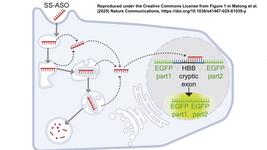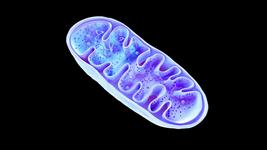CMN Weekly (12 May 2023) - Your Weekly CRISPR Medicine News
By: Gorm Palmgren - May. 12, 2023
Top picks
- A paper in Frontiers Bioengineering by researchers at Cellectis demonstrates the efficacy of TALEN-engineered FAP-CAR T-cells in cancer-associated fibroblast (CAF) depletion, reduction of desmoplasia and tumour infiltration. In vitro and in vivo results in a mouse xenograft model show that gene-edited cells enable reprogramming of the cold, stroma-rich triple-negative breast cancer (TNBC) tumour microenvironment. Subsequently, the tumour becomes susceptible to CAR T infiltration and cytotoxicity, thereby improving the overall antitumor activity of the treatment.
- Researchers in Poland present a new online tool to search for sequence motifs in the user-provided genomic regions and design optimal sgRNAs targeting them. The tool, transCRISPR, provides user-friendly tables and visualisations, summarising features of identified motifs and designed sgRNAs such as genomic localisation, quality scores, closest transcription start sites and others.
Research
- Researchers in China have developed a system for lactate-responsive gene editing to enhance macrophage-mediated cancer immunotherapy synergistically. The system utilises a lactate-catalysed chemodynamic approach to activate the therapeutic genome editing of signal-regulatory protein α (SIRPα) to reprogram TAMs and improve cancer immunotherapy.
- Chinese researchers have studied the effects of length and sequence of gRNA on Cas13b and Cas13d activity in vitro and in vivo. Among their findings is that neither Cas13b nor Cas13d has a particular preference for the sequence composition of gRNA, including the sequence of crRNA and its flanking sites on target RNA. However, the crRNA, complementary to the middle part of the target RNA, seems to show higher cleavage efficiency for both Cas13b and Cas13d.
- Target-seq is a new single workflow for detecting genome integration sites, DNA translocation and off-target events after CRISPR gene editing. Target-seq is based on next-generation sequencing (NGS) and includes a genome integration site (GIS) tool that detects the integration site and copy number of donor DNA delivered in host cells. In addition, two additional tools permit the discovery and relative quantitation of off-target sites and DNA rearrangements, including DNA translocations and large deletions.
- Researchers in China have developed a platform that, in parallel, creates and analyses a library of engineered base editor variants to enable head-to-head evaluation of their editing performance at scale. The platform quantitatively measures each variant’s editing efficiency, purity, motif preference, and bias in generating single and multiple base conversions. In addition, it uncovers undesired higher indel generation rates and noncanonical base conversions for some of the existing base editors.
- American researchers report an engineered Cas12b with improved thermostability within the optimal temperature range (60°C–65°C) of reverse transcription-loop-mediated isothermal amplification (RT-LAMP). The new Cas12a is optimised for one-pot detection of nucleic acids and was engineered using artificial intelligence (AI).
Industry
- Synthego reports the opening of a state-of-the-art good manufacturing practice (GMP) guide RNA manufacturing facility. The facility will feature 24/7 operations with advanced equipment and technologies and also includes dedicated process development, analytical testing, and quality control areas, ensuring that all aspects of the manufacturing process are closely controlled.
- Mammoth Biosciences has laid off 35 people developing CRISPR-based diagnostic assays signalling a change of focus. The company will now prioritise investment in its therapeutics business and advance its in vivo gene editing therapeutics pipeline.
First quarter 2023 financial results
- Prime Medicine reports first quarter 2023 financial results with a cash position of $263.0 million and net losses of $39.4 million. The company additionally says it is working to correct the causative mutation of chronic granulomatous disease (CGD) and to showcase the potential of the PASSIGE platform to multiplex edit CAR-T cells to treat certain cancers and immune disorders.
- CRISPR Therapeutics reports first-quarter financial results with a cash position of $1,889.5 million and net losses of $53.1 million.
- Poseida Therapeutics reports first-quarter financial results with a cash position of $247.2 million and net losses of $38.8 million.
- Precision BioSciences reports first-quarter financial results with a cash position of $158 million and net losses of $25.1 million.
Detection
- American researchers have developed a CRISPR-Cas12a-based assay for the rapid, point-of-care diagnostic of human cytomegalovirus (CMV). The system was tested using CMV-spiked human saliva and urine samples and showed a sensitivity of ∼10 infectious units (IU)/mL without detecting any other herpes viruses.
- Another Cas12a-based assay uses commercial pregnancy test strips for the visible point-of-care testing of SARS-CoV-2. The biosensors utilise the ability of activated Cas12a to cleave a linker between human choriogonadotropin (hCG) and a bead. The combined molecule is too large to flow through the test strip, while hCG can flow freely after cleavage in a positive sample.
- Yet another CRISPR-Cas12-based system for the rapid at-home detection of respiratory pathogens is presented by Chinese researchers. The system is referred to as 4 Thermostatic steps (4TS). It allows all the detection processes to be completed in a constant temperature device, which performs extraction, amplification, cutting of targets, and detection within 40 min.
- Keeping up with Cas12a-based detection assays, the approach has now been combined with recombinase polymerase amplification (RPA) for monkeypox virus (MPXV) testing within 40 min. The two reaction systems were further integrated into a one-step fluorescence assay by optimising the protospacer adjacent motif (PAM) sequence.
Reviews
- Emergence of CRISPR/Cas9-mediated bioimaging: A new dawn of in-situ detection. This review discusses the available CRISPR-mediated imaging systems, highlight the potential of CRISPR-mediated bioimaging for application in biomedical research and clinical practice, and outlines the current bottlenecks and future perspectives of CRISPR-based bioimaging.
- CRISPR Assays for Disease Diagnosis: Progress to and Barriers Remaining for Clinical Applications. This review summarises the properties of known CRISPR-Cas systems, their applications, and the challenges associated with developing assays for the sensitive and specific detection of nucleic acid (NA) targets. In addition, it highlights potential opportunities to improve their performance or address unmet assay needs using nano-/micro-technology platforms.
- The potential of CRISPR/Cas system as emerging tools in the detection of viral hepatitis infection. This review discusses recent advances in CRISPR–Cas diagnostics tools and assesses their potential and prospects in rapid and effective strategies for diagnosing and controlling viral hepatitis infection.
Opinions
- An editorial in JAMA Cardiology discusses how preclinical research on CRISPR gene editing of Ca2+/calmodulin–dependent protein kinase II (CaMKII) could progress to the clinic. Based on a recent demonstration that post-stroke, in vivo, base editing enabled mice to recover from otherwise severe damage, the authors summarise the therapeutic relevance of cardiac CaMKII, highlight the hurdles to overcome and discuss the obstacles currently hindering translation of CRISPR-based modulation of CaMKII into patients.
Meetings and webinars
- On Wednesday, May 17, we present a webinar entitled CRISPR/Cas13d-Mediated Mutant Huntingtin Elimination: A Promising Therapeutic Strategy for Huntington’s Disease. Dr Wenzhen Duan, Professor of Psychiatry and Behavioural Science at Johns Hopkins University School of Medicine will present results from his recent Nature Neuroscience publication describing the use of Cas13d to deplete mutant mRNA transcripts that contribute to the pathogenesis of HD.
News from CRISPR Medicine News
- Monday, we interviewed the Spanish researchers behind a recent study that confirms the feasibility of using CRISPR-Cas9 to correct for otherwise incurable inherited diseases causing vision loss. The team worked with pathogenic mutations in the ABCA4 gene in patient-derived stem cells, providing proof-of-concept evidence that gene and cell therapies may provide a treatment method for inherited retinal dystrophies.
To get more of the CRISPR Medicine News delivered to your inbox, sign up to the free weekly CMN Newsletter here.
Tags
CLINICAL TRIALS
IND Enabling
Phase I
Phase II
Phase III
Recurrent or Progressive High-grade Glioma, (NCT06737146)
Sponsors:
Suzhou Maximum Bio-tech Co., Ltd.
Sponsors:
Suzhou Maximum Bio-tech Co., Ltd.
IND Enabling
Phase I
Phase II
Phase III
Advanced Peritoneal Malignancies or Abdominal Metastatic Solid Tumors, (NCT06912152)
Sponsors:
Zhejiang University
Sponsors:
Zhejiang University
IND Enabling
Phase I
Phase II
Phase III







